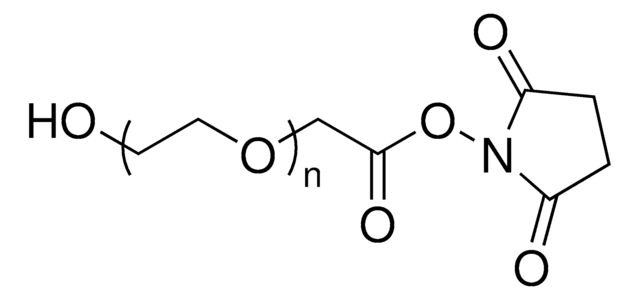902241
N-Hydroxysuccinimide poly(ethylene glycol)-block-poly(lactide-co-glycolide)
PEG average Mn 5000, PLGA average Mn 15000, lactide:glycolide 50:50
Synonyme(s) :
NHS-PEG-b-PLGA, NHS-PEG-PLGA
About This Item
Produits recommandés
Forme
powder
Ratio alimentaire
lactide:glycolide 50:50
lactide:glycolide 50:50±5
Poids mol.
PEG Mn 4000-6000 g/mol (by NMR)
PEG average Mn 5000
PLGA Mn 13500-16500 g/mol (by NMR)
PLGA average Mn 15000
Couleur
white
Adéquation
conforms to structure for NMR
Température de stockage
−20°C
Catégories apparentées
Application
Code de la classe de stockage
11 - Combustible Solids
Classe de danger pour l'eau (WGK)
WGK 3
Point d'éclair (°F)
Not applicable
Point d'éclair (°C)
Not applicable
Faites votre choix parmi les versions les plus récentes :
Certificats d'analyse (COA)
Désolés, nous n'avons pas de COA pour ce produit disponible en ligne pour le moment.
Si vous avez besoin d'assistance, veuillez contacter Service Clients
Déjà en possession de ce produit ?
Retrouvez la documentation relative aux produits que vous avez récemment achetés dans la Bibliothèque de documents.
Notre équipe de scientifiques dispose d'une expérience dans tous les secteurs de la recherche, notamment en sciences de la vie, science des matériaux, synthèse chimique, chromatographie, analyse et dans de nombreux autres domaines..
Contacter notre Service technique